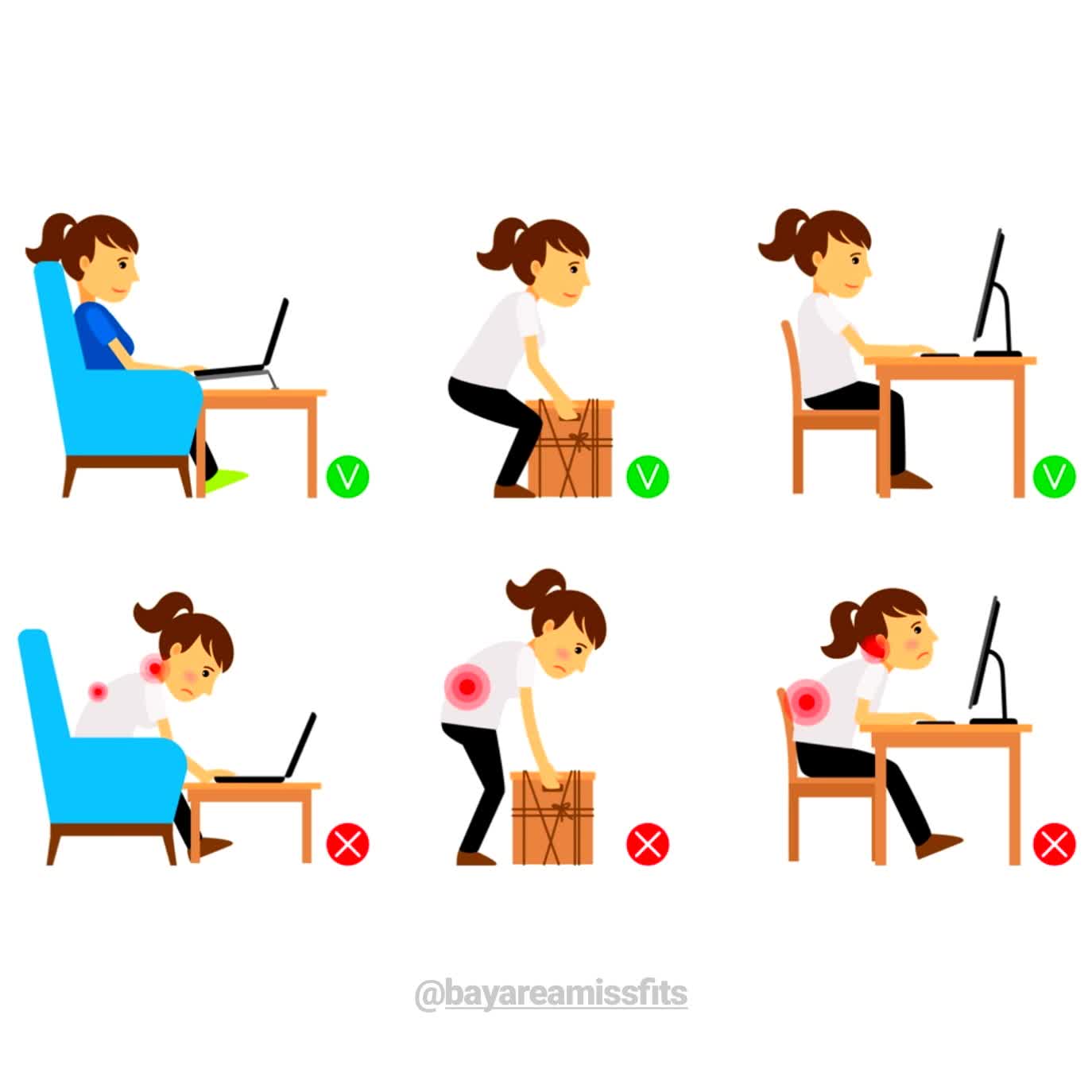Correct postural alignment is the most frequently overlooked aspect of a person’s musculoskeletal health. Your posture and body alignment don’t have to be dramatically off to affect how you function, or to cause you pain. Your spine and major weight-bearing joints work best when aligned one on top of the other; your shoulders, hips, knees, and ankles should all line up when you stand. Because the major joints operate primarily as hinge joints, if they don’t line up properly they torque and twist with every step you take.
Without proper alignment during movement, your strong muscles become stronger and your weak muscles become weaker, while stiff areas remain stiff. This muscle imbalance causes any abnormalities in your posture to become even more pronounced, which perpetuates pain and sets the stage for degenerative conditions to develop or worsen.
Bad posture causes muscles to shorten, which compresses all the joints, especially the spinal joints. Parts grind and grate against each other, accelerating wear and tear. Joint injuries, as well as tendonitis and bursitis are often caused by postural imbalances. Eventually, improper posture leads to permanent muscle shortening, weakness, fatigue, muscle spasms and loss of range of motion in the spine, hip and shoulder joints. Worst of all, continued bad posture and alignment leads to arthritis and bulging or herniated discs. All of this translates into pain. Over time, years of poor posture and alignment become impossible to fix without corrective therapy.

Examples of bad posture surround us. We slump and slouch, heads bent over our smart phones, iPads, or computers with our shoulders slouched and our necks thrust forward like turtles looking for food. There is very little awareness of what good posture looks like and even less recognition that bad posture causes a variety of ailments.
What can you do TODAY to improve YOUR POSTURE? Stand with your side to a full-length mirror and take a look at your profile; do your neck, shoulders, hips, knees and ankles line up? They should. Pull your head up high, align your pelvis directly under your shoulders, stretch your neck up tall, and notice how your body looks when you are in correct alignment. Try to be more aware of your posture throughout the day. Check in with your body regularly to “re-set” your postural checkpoints. The simple act of becoming more aware of your posture increases your likelihood of improvement. Be kind to your body, it’s the only one you have.
Recent Comments